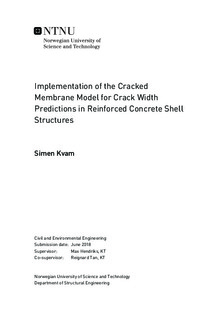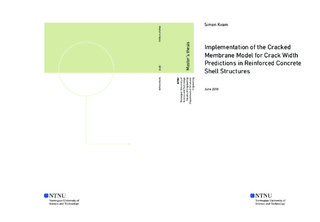| dc.description.abstract | Crack control is an important part of design of reinforced concrete shell structures in the serviceability limit state. Crack width calculations are performed in accordance with design codes, which are based on beams and columns, and thus, challenging subjective interpretations are necessary for application to shell sections. In addition, inherent physical inconsistencies in the formulas available in the present building codes, complicate the crack width expressions.
This thesis has aimed at contributing to an improved description of the crack width development in concrete shell structures. A new method was thus proposed, with purpose of providing more accurate response predictions where the physical nature of the problem is better reflected in the formulas. In that context, the cracked membrane model (Kaufmann & Marti 1998) combined with a layered approach was employed for crack width calculation of shell structures. The iteration method (Øverli & Sørensen 2012) gives the distribution of forces across the shell cross section, while the cracked membrane model estimates the response at the cracked surface.
The investigations performed in this thesis indicate that the cracked membrane model formulation contributes to an enhanced physical description of the crack development, both for one-dimensional beams and two-dimensional shells with orthogonal reinforcement. Experimental verification also showed that the cracked membrane model and the new approach for shell structures proposed in this thesis provide considerable improvements in crack width estimates compared to the current design codes. Also a simplified version of the cracked membrane model showed to provide accurate response predictions for loading in the serviceability limit state.
Based on the findings of this thesis it is recommended that the cracked membrane model formulation is used as basis for new crack width formulas in design codes. Although more research and verification of the new proposed method is necessary, it can potentially be implemented in post-processing analysis of concrete shell structures. | |

